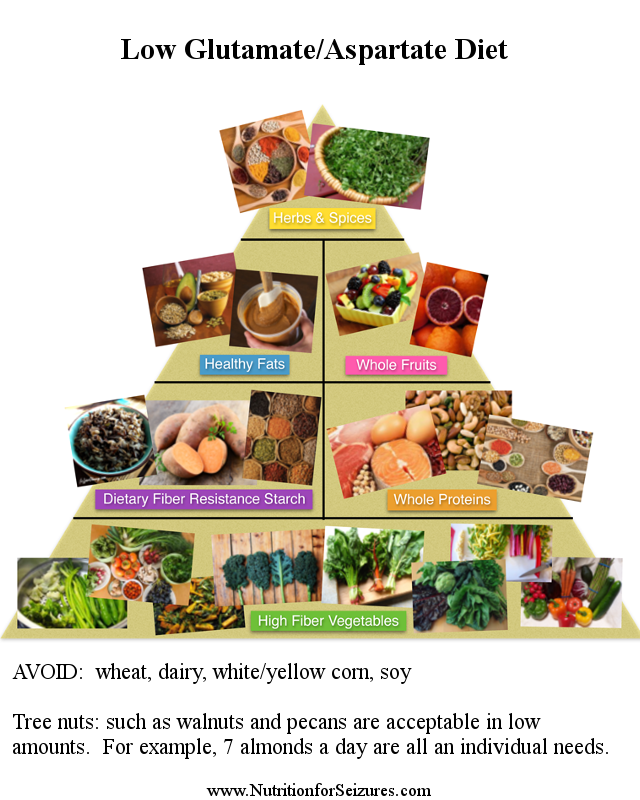Avoid the following foods that are rich in glutamate and aspartate, two very excitatory amino acids. Below I’ve listed what to AVOID and what TO EAT.
Here’s what NOT to eat:
Avoid these excitatory amino acids by avoiding these foods:
1) Grains: Wheat, barley, and oats are highest in glutamine. Corn and rice are lower. Therefore they may be better for anyone with a tendency for epilepsy.
2) Dairy Products: All cows milk products are high in glutamine. Goat-based dairy is much better in this regard. Cow-based cheese that appear to be the worst include cheddar, Swiss, Monterey Jack, Mozzarella and worst is PARMESAN. Casein is very concentrated in cheese and is 20% glutamic acid by composition.
3) Beans: Soy, Pinto, lima, black, navy, and lentils are also high in glutamic acid or glutamine.
4) Seeds: Sunflower, pumpkin, and others are also high in glutamine, though less than wheat and dairy. I do not recommend them anyway, as they are harder to digest and perhaps a bit toxic.
5) Peanuts: These are very high in glutamine, as are cashews, pistachios, and less-so almonds. We do not recommend many nuts on nutritional balancing programs. Some toasted almond butter, however, is usually okay once or twice weekly.
6) All Soy Products, except perhaps for a little tofu and tempeh. Soy is very high in glutamine. Beware, as soy is incorporated into many, many products as a filler and cheap protein source. It may be labeled as vegetable protein, textured vegetable protein, soy isolate or not labeled at all, sadly.
7) Diet Drinks And Diet or Non-sugared Foods of All Kinds: These are the primary source of aspartate as they are often sweetened with Nutrasweet, also called Equal or aspartame. AVOID ALL PRODUCTS CONTAINING THIS INGREDIENT.
8) Prepared Foods Such As Soups: 70% of prepared foods and many soups contain MSG. AVOID ALL FOOD PREPARED WITH MSG. This may also be labeled as hydrolyzed vegetable protein, soy protein extract, textured vegetable protein – or not labeled at all. Chinese and some other oriental foods served in restaurants may also contain MSG, as this is a common flavor enhancer in oriental cooking.
9) Meats: Meats are naturally rich in glutamate and aspartate, but this is offset by other amino acids in the food that balances them, in almost all cases. Meat is generally a healthful food and should not be avoided. Rabbit and turkey are the highest in glutamate, while lamb and eggs are the lowest. Chicken is fairly low as well. The amount in a normal serving of meat should not be enough to cause problems. I believe that the other “unnatural” sources of glutamate, when combined with the meats, might cause problems, but in general, meat alone is not the problem.
Here is what TO EAT in pdf format:



